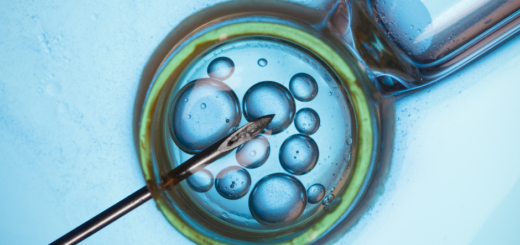HIRSUTISM, EXCESS BODY HAIR IN FEMALE
Excessive growth of facial or body hair on women may be symptom of an underlying disorder. Dark and coarse hair may appear on the face, chest, abdomen, back, upper arms, or upper legs due to excess androgens in blood. Most common medical disorder causing hirsutism is PCOS (Polycystic Ovary Syndrome) accounting up to 10% of all cases.
Excessive growth of facial or body hair on women may be symptom of an underlying disorder. Dark and coarse hair may appear on the face, chest, abdomen, back, upper arms, or upper legs due to excess androgens in blood. Most common medical disorder causing hirsutism is PCOS (Polycystic Ovary Syndrome) accounting up to 10% of all cases. Prompt medical attention often improves the condition whereas delaying medication makes the treatment more difficult and may have long-term health consequences.
The Human Hair
The human hair follicle is a complex structure and much has not been learnt about it. The hair follicle can be divided into 3parts: the lower segment (bulb and suprabulb), the middle segment (isthmus), and the upper segment (infundibulum). The lower segment around 4mm in length stays below the skin surface. The middle segment is a short section and the upper segment extends from the entrance to the skin to outside. Hair grows continuously in a cyclical fashion and rate of hair growth differs according to its position. Human body is covered by small vellus hair throughout except the palm and sole. In contrast the scalp is covered by lengthy terminal hair. The number of hair follicle at birth is fixed for life and it is around 100000 follicles in the scalp and 50 million on the body on an average.
Growth Cycle of Hair
Each hair grows from a follicle deep inside skin. Hair continues to grow even if it is plucked or removed as long as hair follicles are not completely destroyed. The number of hair follicles slowly begins to decrease at around age 40. Hair density varies by ethnic origin. Men and women of the same ethnic group have similar numbers of hair follicles and similar hair patterns. Asians and American Indians generally have less body hair than people of Mediterranean descent. Excessive hair that is due to genetic and ethnic variation is typically located on the arms, hands, legs, and feet, whereas hirsutism typically affects the face, abdomen, chest, inner thighs, and back.
Adults have two types of hair, vellus and terminal Vellus hair is soft, fine, generally colourless, and usually short. In most women, vellus hair covers the face, chest, and back and gives the impression of “hairless” skin. Terminal hair is long, coarse, dark, and sometimes curly and covers the face and body of men. Terminal hair grows on the scalp, pubic, and armpit areas in both men and women. A mixture of vellus and terminal hair covers the lower arms and legs in both men and women.
Hair growth occurs in cycles. While some hair follicles grow, others rest, and still others are shed. Hormonal changes, such as those associated with oral contraceptives (birth control pills) or pregnancy, may synchronize hair growth and make it appear to grow and shed more than usual. However, hair growth patterns usually return to normal within 6 to 12 months.
EFFECTS OF ANDROGENS ON HAIR GROWTH
Terminal hair that covers the face and body of men is usually the result of androgens. In men, androgens are produced primarily by the testes and the adrenal glands. In women, androgens are also produced but at a lower amount by the ovaries and the adrenal glands. Oestrogens, the female hormone reduces the effect of androgens in women. If vellus hair in women are sensitive to androgen then it may change to thick coarse terminal hair which grows faster. Once a vellus hair has changed to a terminal hair, usually it does not change back and is called hirsutism. Androgens increase sebum production, which results in oily skin and acne. Excess androgens in women can cause irregular or absent ovulation and menstruation. Extremely high androgen levels, such as when a tumor is present, may cause male-like balding, deepening of the voice, increased muscle mass, enlargement of the clitoris, and decreased breast size. These effects of excess androgens are called virilisation.
What causes hirsutism?
- Excessive production of androgens by the ovaries (polycystic ovary syndrome, tumor)
- Excessive sensitivity of hair follicles to androgens (genetic)
- Excessive production of androgens by the adrenal glands (non-classical adrenal hyperplasia [NCAH])
- Insulin resistance
- Hyperandrogenism, insulin resistance, acanthosis nigricans (HAIR-AN syndrome)
- Excessive production of cortisol by the adrenal glands (Cushing syndrome)
- Menopause
- Medications
Polycystic ovary syndrome is the most common cause of hirsutism and it is due to associated hormonal imbalances that cause the ovaries to overproduce androgens.
Unexplained Hirsutism
For unknown reasons, some women have hair follicles that are abnormally sensitive to androgens. Androgen levels are normal and menstrual periods occur regularly in these patients. This tendency to develop hirsutism is clearly genetic, but the exact abnormality is not known.
Ovarian or Adrenal Tumors
On rare occasions, an androgen-producing tumor may develop in the ovaries or adrenal glands. This tumor may produce extremely high androgen levels. Symptoms, such as hirsutism, usually appear suddenly and progress quickly. Very high androgen levels may cause male-like balding, deepening of the voice, and increased muscle mass. Fortunately, most of these tumors are not cancerous.
Menopause
Around the time of menopause, the ovaries stop producing estrogen but continue to produce androgens. The decreased levels of estrogen may allow the androgens to have a greater impact, leading to an increase in 8 the number of dark terminal hairs, especially on the face. For this reason, many menopausal women complain of new facial hair (moustache and whiskers) and mild balding.
Which drugs may cause hirsutism?
Drugs with characteristics of androgens may cause hirsutism. Anabolic steroids used to increase muscle mass in chronically ill and debilitated people and by some bodybuilders, are chemically related to androgens. Natural supplements such as DHEA may cause hirsutism. Danazol, phenytoin, minoxidil, and diazoxide are other medications associated with increased hair growth.
How Hirsutism is diagnosed?
Physicians trained to treat hirsutism and related problems generally include reproductive and medical endocrinologists. Some gynecologists, dermatologists, and general practitioners also have acquired the necessary expertise. After identifying the causes of hirsutism, physician can recommend appropriate treatment. Any unwanted hair remaining after treatment may be removed by a variety of cosmetic treatments, including laser and electrolysis.
Doctors might recommend an ultrasound or a CT scan to check ovaries and adrenal glands for tumours or cysts. Tests that measure the amount of certain hormones in blood, including testosterone or other testosterone-like hormones, might help determine whether elevated androgen levels are causing hirsutism.
What laboratory tests should be ordered for a patient with hirsutism?
Laboratory testing depends on the symptoms expressed by patients. Cases of mild hirsutism may be left alone without any investigations. However, serum levels of total and free testosterone, DHEAS, and 17-OHP can be useful tests, depending on the individual patient. Patients with signs or symptoms of hypothyroidism,
hyperprolactinemia, acromegaly, or Cushing syndrome also should be evaluated with serum thyroid-stimulating hormone (TSH), prolactin, IGF-I, or 24-hour urine cortisol testing, respectively.
How is hirsutism treated?
- Treatment of hirsutism is usually with a combination of oral contraceptive pills, spironolactone, other drugs like eflorinithine and cosmetic measures; however, other antiandrogens and gonadotropin-releasing hormone agonists can be used.
- Patients with polycystic ovary syndrome may have improvement of symptoms if they are treated with insulin sensitizers.
- Treatment of virilization is surgical removal of the tumor or steroid treatment for congenital adrenal hyperplasia.
How do you choose the appropriate therapy for hirsutism?
Most patients are given a trial of OCPs, with or without spironolactone, and are advised to use cosmetic measures while waiting for the medications to work. The topical cream eflornithine HCl may be used alone or in combination with other measures. Because of their more serious side effects and higher cost, the other medications are reserved for the most severe cases in which OCPs and spironolactone fail.
Whatever therapy may be chosen, the results do not last for more than 3 to 6 months. Although many medications and combinations have been used, only topical eflornithine HCl is currently approved by the Food and Drug Administration for treatment of hirsutism. Unfortunately, most patients have a relapse of hirsutism approximately 12 months after discontinuation of medical therapy.
What cosmetic measures can be used for the treatment of hirsutism?
Bleaching, shaving, plucking, waxing, depilating, and electrolysis are effective measures that can be used alone or in combination with medications. By these procedures terminal hair that is already present is removed. Simultaneous use of medications decrease new growth and rate of transformation to terminal hair. Laser-assisted hair removal is a commonly used method of treatment for hirsutism. It is done on outpatient basis using intense pulsed light therapy which cause thermal injury to the hair follicle. At least three to six treatments about 2 to 2.5 months apart are required. The techniques result in removal of hair, and a period of 2 to 6 months before the regrowth of hair, which is thinner and lighter. Patients with light skin and dark hair have the best results with the fewest side effects. The side effects include minimal discomfort, local swelling and redness lasting 24 to 48 hours.





















